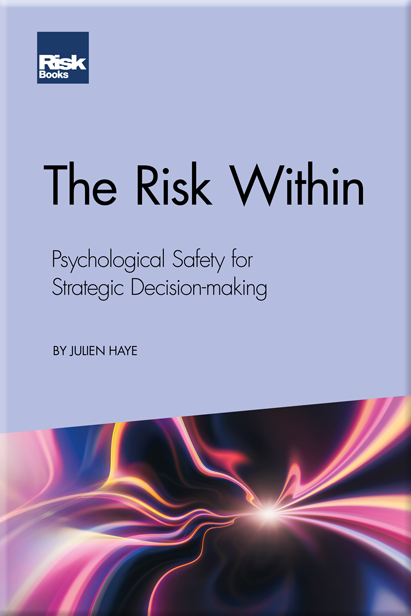The Risk Within; Psychological Safety for Strategic Decision-making
The Risk Within; Psychological Safety for Strategic Decision-making
Julien Haye
Couldn't load pickup availability
In a world where uncertainty is constant, the key to innovative, risk-conscious decision-making and resilience can often lie with an organisation’s people and technology. In his book The Risk Within; Psychological Safety for Strategic Decision-making author Julien Haye discusses how embedding psychological safety into leadership and governance can create a powerful framework. Risk leaders can then better manage the complexities of risk management, innovation and cultural transformation with integrity, resilience and purpose. Haye challenges rigid, reactive risk functions which can undermine decision-making. Too often organisations can invest heavily in risk and compliance but fail to create risk management environments where people feel safe to speak up, challenge assumptions and confidently navigate uncertainty.
Resistance to change, compounded by siloed departments and communication barriers, can complicate the alignment of risk management with a psychological safety-oriented environment. Moreover, the relentless pursuit of short-term objectives can overshadow investment in initiatives that foster long-term success. As a former Chief Risk Officer, a seasoned board advisor and commercially astute risk expert, Haye understands the vital connections between people, culture and effective risk management. Through real-world case studies and practical strategies, The Risk Within; Psychological Safety for Strategic Decision-making equips executives, board members and risk professionals to build adaptive, high-trust cultures that convert risk from a burden into a competitive advantage.
Share

More information
About the Author
Table of contents
Introduction
1 What is psychological safety and how does it impact organisations?
2 The seven principles of psychological safety in managing risk and uncertainty
3 Blending transparency, accountability and risk strategy
4 Empowering teams for effective risk management
5 Leveraging setbacks for informed risk management
6 Integrating adaptive and agile risk intelligence with psychological safety
7 Building a foundation of trust and oversight
8 Cultivating supportive environments
9 Organisational maturity assessment
10 Dealing with multicultural environments
11 Change management
12 Establishing the roadmap
13 Adapting the risk function
14 Conclusion

